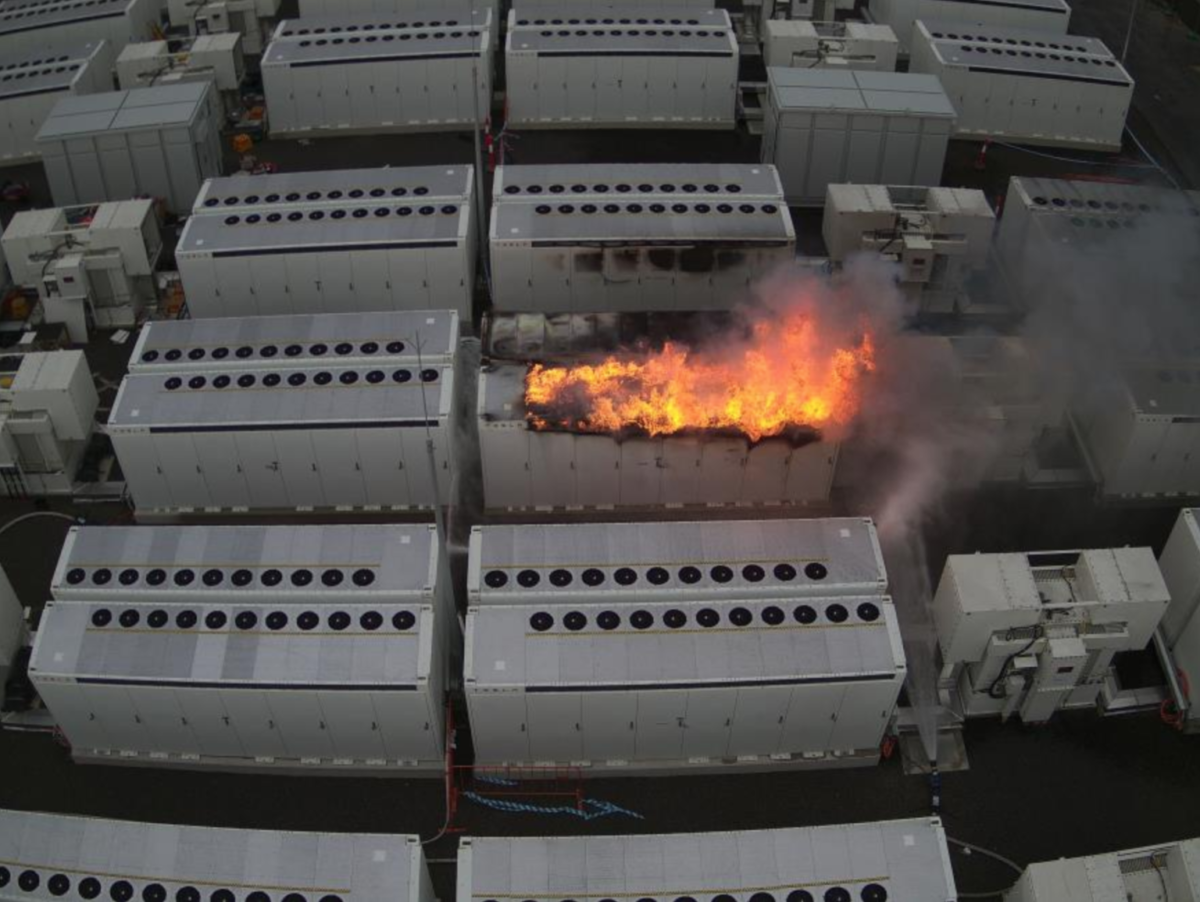A report by Firetrace International states that negative media publicity covering recent fire incidents resulting from faulty energy storage systems is sowing public opposition, and the suppression specialist offers ways to reduce fires and suppress the opposition.
As battery energy storage systems proliferate in the U.S., so do the reports of battery fires or overheating batteries. From the Salt River Project to a Tesla installation, these fires make the news. The American Public Power Association use these fires, which mostly have lithium ion batteries, as an opportunity to reiterate earlier comments by the Arizona Corporation Commission stating that lithium-ion chemistries used in battery storage facilities created unacceptable risks. They said the fire brought fresh attention to safety issues tied to energy storage.
Firetrace International says that negative coverage such as this has led to the postponement of domestic energy storage infrastructure projects. Due to such fires, the report says that insurance companies are now less inclined to cover energy storage projects. Those that do provide coverage have increased premiums, implemented higher excesses or denied 100% coverage. The report notes that this is despite the Electric Power Research Institute’s database showing that domestic energy storage failure incidents have decreased from 16 in 2018 to six as of July this year.
To help energy storage companies regain investor, policymaker and public trust in battery energy storage systems, Firetrace outlines ways in which manufacturers, developers and operators can decrease the risk of common fire hazards. Some of these include separation of battery containers and other major equipment, ensuring that EPC contractors understand battery storage technology, having a sufficient water supply to the site, making sure that local fire departments are familiar with the installation, and more.
The report also cites the National Fire Protection Association (NFPA), which says water-based suppression systems are the most effective way to cool an energy storage system fire. The NFPA recommends that buildings housing energy storage systems install NFPA 13-compliant sprinkler systems.
In addition to a water suppression system, Firetrace recommends a battery management system and grouping energy storage units into small segments limited to certain amounts of kilowatt hours and spaced from other segments and walls.
“There are fire suppression companies who claim their systems can suppress Li-Ion battery fires and prevent thermal runaway,” says Brian Cashion, engineering manager, Firetrace International. “We don’t believe the industry can make these claims yet because there is no publicly available test data proving these claims in real world test scenarios and doing so risks a second wave of public scrutiny. It is crucial we get the solution right.”
In addition, the report suggests that manufacturers implement monthly preventative checks and thermographic testing, keeping spare parts handy to minimize interruptions should upgrades be implemented. Since domestic storage fire regulations vary from state to state, different rules inform design and installation practices, which the report says can decrease system safety and quality. The report also notes that the NFPA suggests that systems housing enough batteries in a confined space with the capacity to generate an explosion should install prevention systems or deflagration venting per NFPA 69, Standard on Explosion Prevention Systems and NFPA 68, Standard on Explosion Protection by Deflagration Venting.
Regulations are also important to note, however, the report points out that they are “developing haphazardly with a state-by-state approach.” For example, each state can have a different fire code, which means that energy storage systems can be designed differently depending on where they are located. For example, as of April 1, 2021, there were eight states on the 2012 cycle, 23 states (plus the District of Columbia) on the 2015 cycle, 17 states on the 2018 cycle, and two states (California and New York) on the 2021 cycle.
Furthermore, solar and energy storage design and engineering consultancy Mayfield Renewables has noted that some U.S. states adopt the International Fire Code (IFC) for energy storage, while others adhere to the National Fire Protection Association (NFPA) code.
Also read Energy storage fire, explosion and safety manual training release.
This content is protected by copyright and may not be reused. If you want to cooperate with us and would like to reuse some of our content, please contact: editors@pv-magazine.com.








It’s been said before…simply DON’T use battery setups that require special BMS and fire suppression systems (Lithium ion, etc).
Other options include Ambri, some of the flow batteries, etc. Also pick a system that is made from cheap and abundant materials–you don’t need the lower weight, higher cost and higher risk of lithium for a large, non-moving/stationary system.